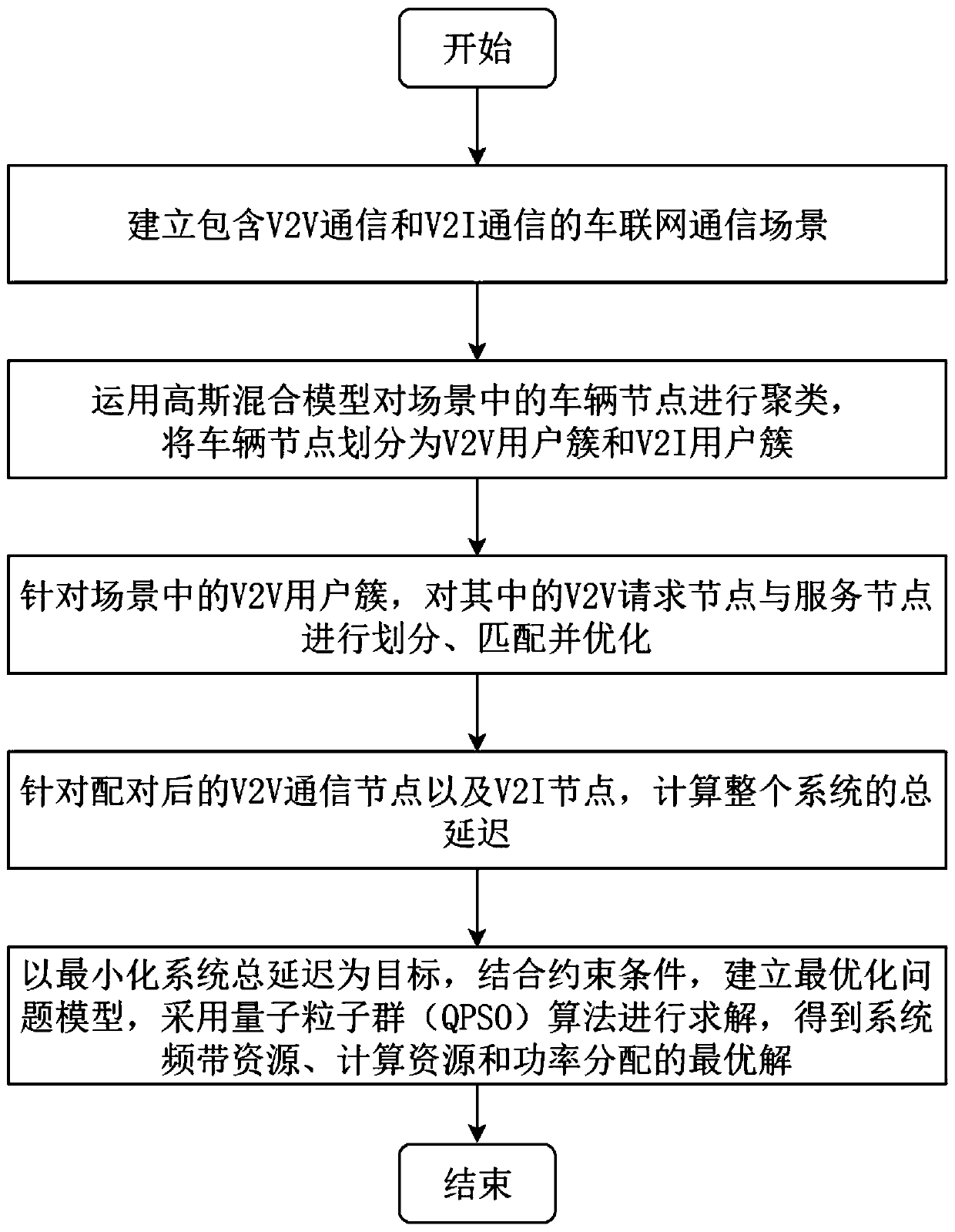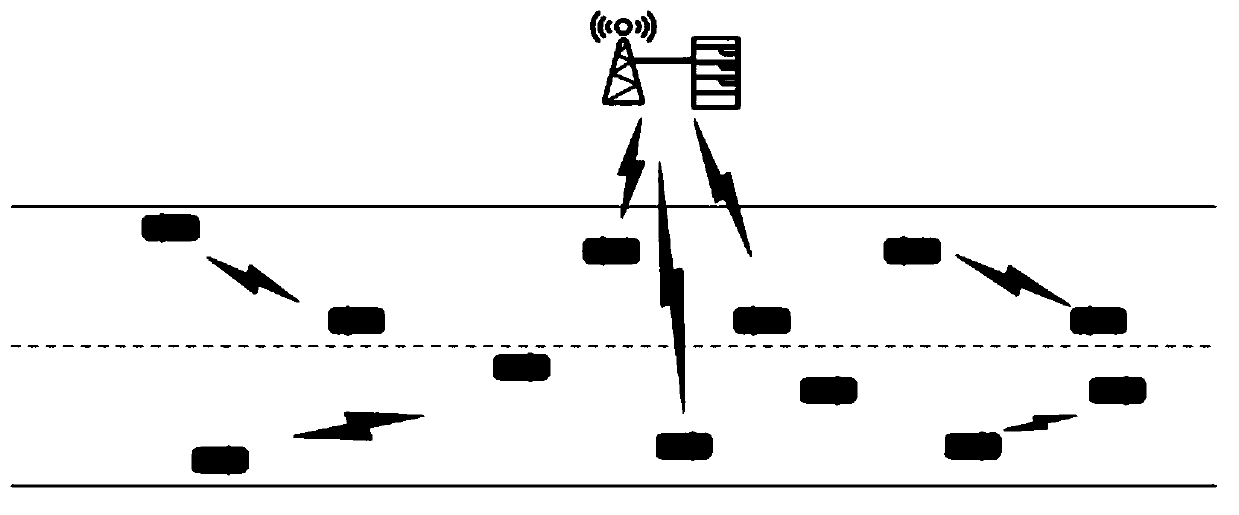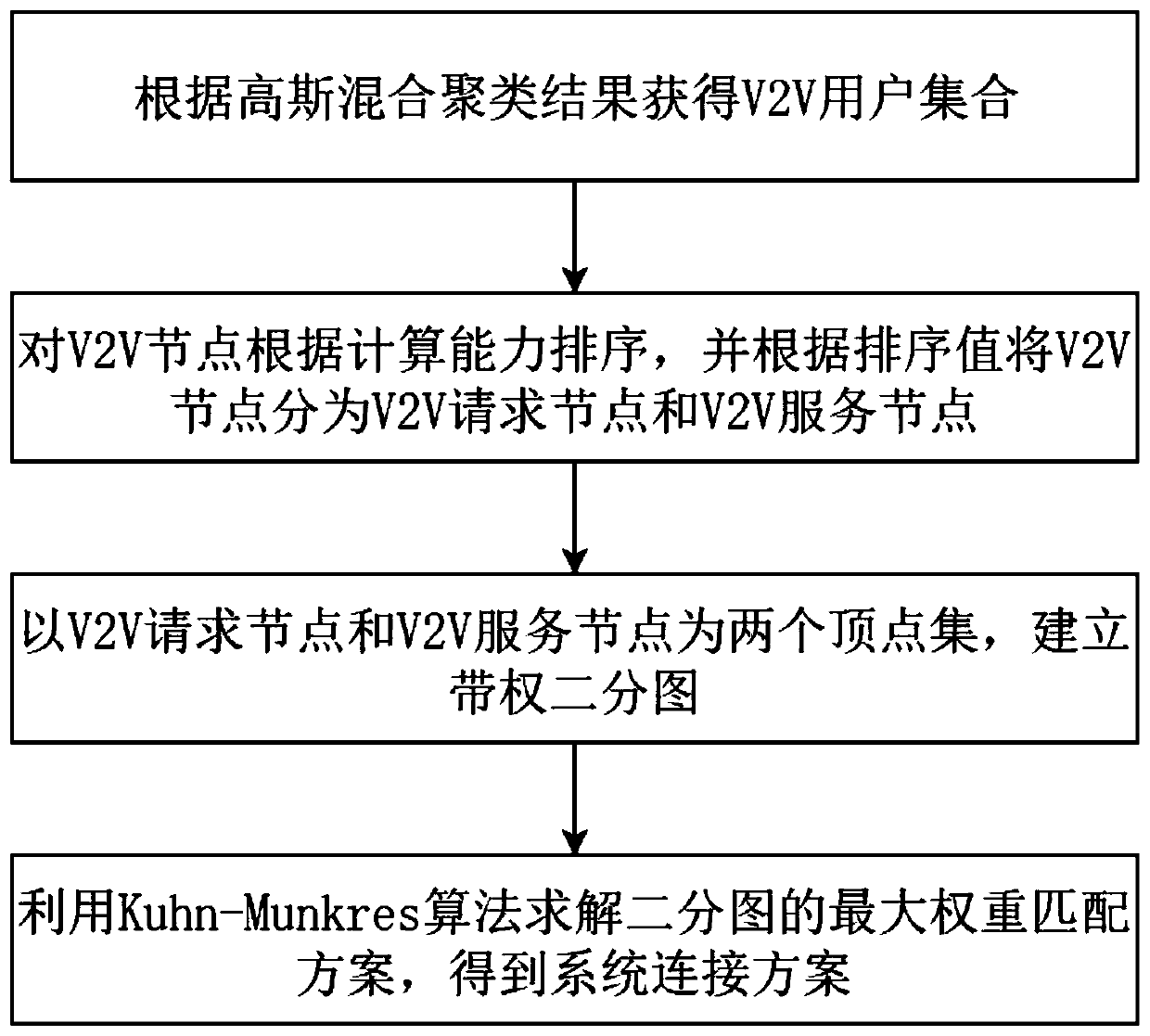Task unloading and resource allocation method based on mobile edge computing in Internet of Vehicles
A technology of edge computing and resource allocation, which is applied to services based on a specific environment, communication between vehicles and infrastructure, computing, etc. It can solve the problem of not considering how D2D users establish pairings.
- Summary
- Abstract
- Description
- Claims
- Application Information
AI Technical Summary
Problems solved by technology
Method used
Image
Examples
Embodiment
[0077] Such as figure 1 As shown, the basic embodiment of the present invention discloses a task offloading and resource allocation method based on mobile edge computing in the Internet of Vehicles system. The present invention divides the task offloading and resource allocation method in the Internet of Vehicles system based on mobile edge computing into aggregation There are three main steps of classification, pairing and solving. Among them, using two steps of pairing and clustering, by comprehensively considering the amount of task data, computing power of each vehicle in the Internet of Vehicles system based on mobile edge computing, and the distance between vehicle-infrastructure (V2I) and vehicle-vehicle (V2V), etc. Factors determine the offloading mode of each vehicle task that minimizes the total unloading delay. Specific steps are as follows:
[0078] S1. Construct an application scenario of the Internet of Vehicles system deployed with base stations, edge computin...
PUM
 Login to View More
Login to View More Abstract
Description
Claims
Application Information
 Login to View More
Login to View More - R&D
- Intellectual Property
- Life Sciences
- Materials
- Tech Scout
- Unparalleled Data Quality
- Higher Quality Content
- 60% Fewer Hallucinations
Browse by: Latest US Patents, China's latest patents, Technical Efficacy Thesaurus, Application Domain, Technology Topic, Popular Technical Reports.
© 2025 PatSnap. All rights reserved.Legal|Privacy policy|Modern Slavery Act Transparency Statement|Sitemap|About US| Contact US: help@patsnap.com



